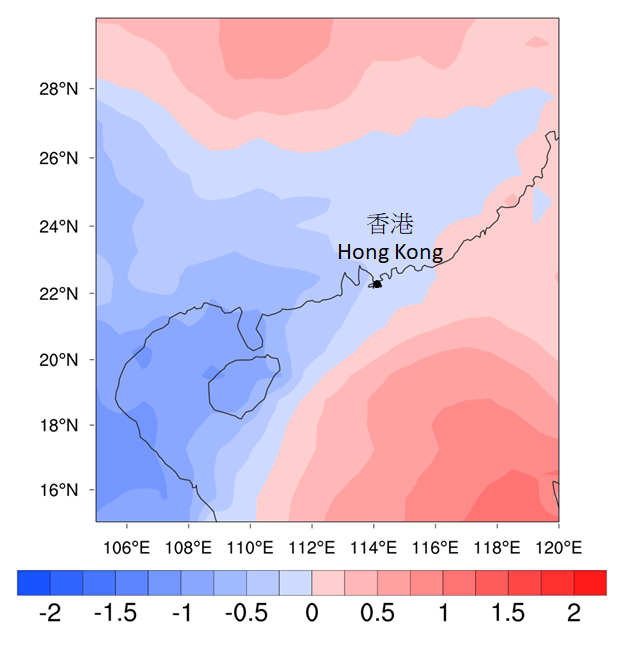Seasonal forecast for winter 2020/21
30 November 2020
In the past month or so, sea surface temperatures of the central and eastern equatorial Pacific continued to cool. Based on the latest oceanic observations as well as forecasts by a number of climate models around the world, the central and eastern equatorial Pacific are expected to remain colder than normal during the 2020/21 winter (December 2020 – February 2021). The situation is likely to develop into a La Niña event. Based on statistical analysis, the chance of normal to below-normal winter (December – February) temperature in Hong Kong is generally higher during La Niña. However, La Niña has no significant impact on winter rainfall in Hong Kong.The majority of climate models around the world forecast stronger-than-normal northeast monsoon over southern China this winter and hence normal to below-normal temperature for the south China coast. Taking the development of La Niña and climate model forecasts into consideration, normal to below-normal temperature in Hong Kong is more likely for this winter. Besides, day-to-day fluctuations in weather and temperature could be quite large with occasional cold weather. Under the influence of the developing La Niña and stronger-than-normal northeast monsoon, Hong Kong is likely to experience more cold days this winter compared to the previous winter. Please refer to the latest local weather forecast and 9-day weather forecast issued by the Hong Kong Observatory. Cold weather refers to temperature falling to 12℃ or below. On average, there are about 14 cold days per winter. During the last winter, there were 8 days of cold weather.
Under the influence of stronger-than-normal northeast monsoon, normal to below-normal rainfall in Hong Kong is more likely for this winter.
The seasonal forecast for Hong Kong is available at this website.

Temperature forecast chart for the 2020/21 winter based on the average of a few global climate models. The unit of values displayed in the legend is standard deviation (σ). Blue is negative anomaly, indicating temperature below normal. Red is positive anomaly, indicating temperature above normal.